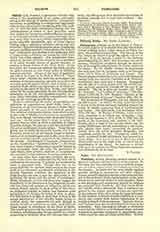

Famagusta, a titular see in the Island of Cyprus. The name appears to be derived from the Greek ammochostos (a sandy point) rather than from Fama Augusti, the traditional etymology. The history of the city cannot be traced beyond the eighth century of our era. It is not certain, Lequien to the contrary notwithstanding (II, 1065), that it occupies the site of Arsinoe. Famagusta prospered through the destruction of the neighboring Salamis, the former capital of the island. By the twelfth century its importance was such that Guy de Lusignan chose to be crowned there (1191) King of Jerusalem and Cyprus. The French princes fortified the town, and in the thirteenth century built the beautiful Cathedral of St. Nicholas, transformed since then into a mosque. Famagusta was the seat of a Latin diocese from the twelfth century and had residential bishops till the end of the sixteenth. The list is given by Lequien, III, 1219-24; Ducange, “Les families d’outré-mer”, 861-864; Eubel, I, 253-54, II, 168; Hackett, “History of the Orthodox Church of Cyprus“, London, 1901, 577-87.
The prosperity of Famagusta was not affected by the fall of Acre. In 1342, a German writer described it as one of the richest and most beautiful cities of the world, its wealth surpassing that of Constantinople and Venice. (See Mas-Latrie, Lïle de Chypre, Paris, 1879, 236-40.) St. Bridget of Sweden, in her revelations, compares it to Sodom and Gomorrha. Captured by the Genoese in 1374, it fell, in 1389, into the hands of the Venetians, who retained it till 1571. Finally, after a siege of ten months, which cost the enemy 50,000 men, the city surrendered to the Turks, who, despite their treaty, massacred the garrison, burned alive the brave governor, Bragadino, and completely sacked the city. Famagusta, which formerly numbered 70,000 inhabitants, was reduced to a mere village. It is known today as Mankosta (1000 inhabitants) and is the chief town of one of the six departments of the island. Its harbor is choked with sand; its palaces, dwellings, highways, ramparts, and churches are all in ruins.
S. VAILHÉ

